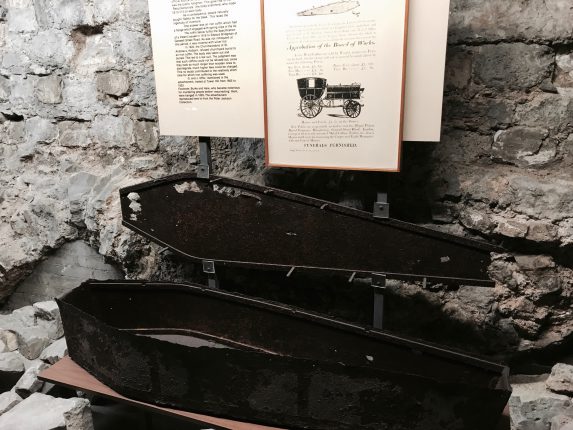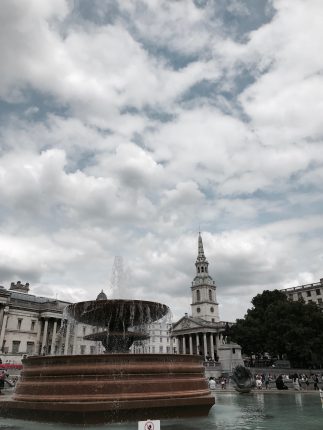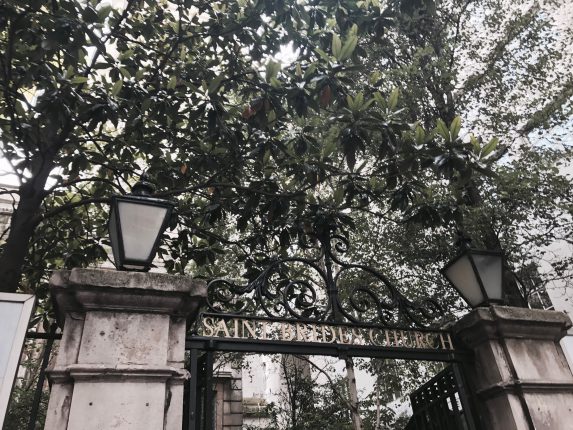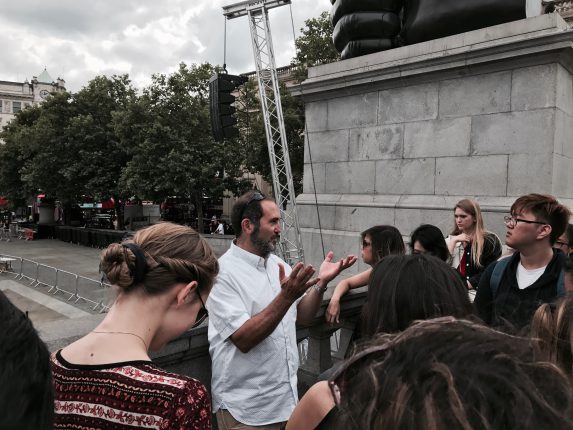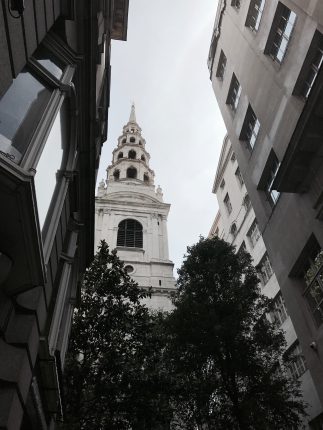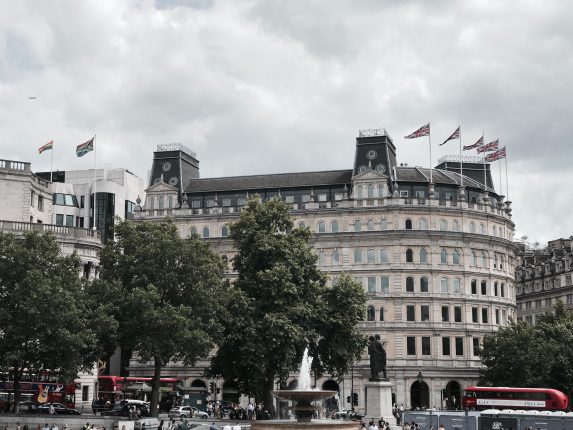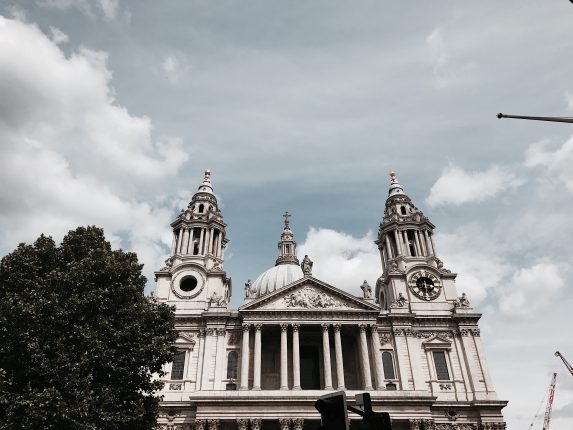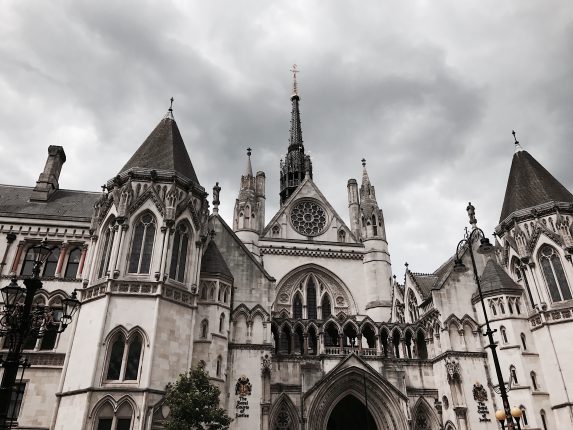BY SAVANNAH SHAPIRO
London
Our second walking tour consisted of walking Trafalgar Square, which soon became one of my favorite hubs in London. Trafaglar square is busy and has been busy since the 1830s. Professor Makdisi explained during our walking tour that Trafaglar Square was a beacon for protests and riots during the 19th century. The statue that stands directly in the middle marks the middle of the congested area and became my personal indicator that I was in the right place and not lost. The area now known as Trafaglar Square was originally known to be Charing Cross, but was later changed to expand the space and create a new urban space. Trafaglar Square is home to The National Gallery, which Professor Makdisi took us to later in the week. Not only does The National Gallery have paintings by Monet, Van Gogh, and Hogarth, but the gallery is also free and air conditioned (something that is hard to find in London). In addition, the National Gallery holds many other pieces of artwork by other artists which collectively amount up to around 300 paintings within the gallery itself.
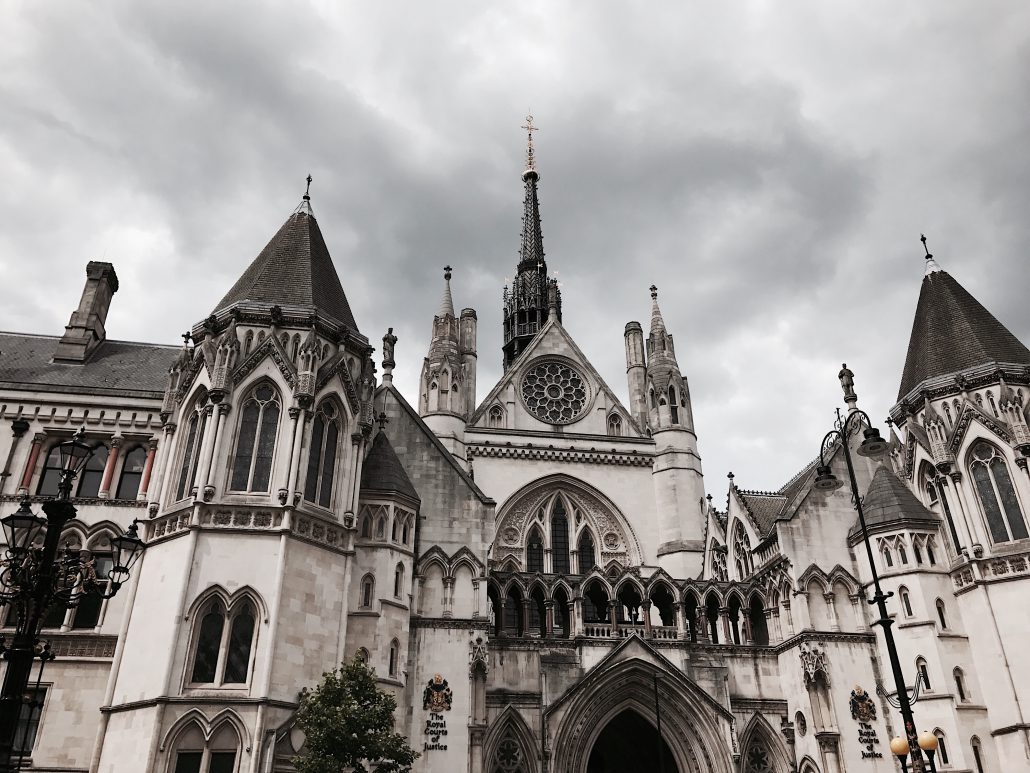
Running to the East of Trafalgar Square is The Strand which we walked all the way down past St. Paul’s Cathedral. Marking The Strand is an intricate building that is The Royal Courts of Justice. There is a large pillar that stands in the middle of the road with a dragon like gargoyle which used to be a warning for people outside the gates. Severed heads would be placed on the spikes and on the gargoyle statue in order to warn the people that they were a force to be reckoned with. Ahhhh scary!

After we walked down The Strand, we ended our walking tour day at Saint Brides Church. The church is interesting for two reasons: the steeple at the top was modeled after a wedding cake on purpose which explains why it is stacked like a cake and the church has remains and fragments after London was hit by bombings in World War II. You can actually go under the church and see where the church was hit.
It was only the second day in London but the places we went during our walking tour truly took my breath away. We stopped by St. Paul’s Cathedral which was the heart of the old city of Lodnon during the time period in which we are studying. The design was by Wren and it demonstrates both Egyptian and Ancient Greek architecture. When we were passing the catherdral during our walking tour, Professor Makdisi advised us to look inside the church, but only when their five o’clock mass started. You could not only experience the service that was being held, but also, you do not have to pay to get inside the church during this time. If you wish to see the inside of the church at times that are not during the evening service, you can pay £15 to look inside. Regardless, it is something that is definitely worth seeing.
Quick Tips:
- Don’t pay to go inside St. Paul’s Cathedral, go at 5:00 PM for free admittance
- Go see St. Paul’s Cathedral (It was one of my top five churches to see in London)
- Bring water! We walk a lot and the days are hot and humid at times, so stay hydrated!
- Soak everything up! This was a cool walking tour!
Savannah Shapiro studied abroad in England on the 2017 Summer Travel Study program “London and the Age of Revolution:” https://ieo.ucla.edu/travelstudy/English-London/


